At any mobile game out there with a long legacy, creative teams struggle on thinking how can they make their players – many of which have a long, overpowered collection already – keep interested on new content.
This article puts the focus on a content management structure that could boost both engagement and revenue on your title, and which Magic: The Gathering has perfected while successfully monetizing its audience in a sustainable way, for almost 20 years now.
(This is the first part of a series: here we will explaining the basics of the system, and then there’s a second part – to be released soon – where we will explore how a model like this could be adapted to Clash Royale…)
MAGIC 101
For those that don’t know about it, MTG is a very competitive physical collectible cards game (CCG) where two players aim to defeat each other by commanding summoned creatures and casting all kinds of spells which alter or introduce new rules.
It was released in 1993 by Wizards of the Coast, and since then it has grown into a multi million dollar franchise which includes several videogames, novels, comics and an upcoming Netflix series.

If any of you is playing, add me as afriend at JB_DEV#02100
MONETIZATION in MTG
The primary monetization method on MTG is fairly easy to grasp: they sell new cards.
New cards come in sets: groups of ~270 cards that are released at the same time, and which share the similar theme, lore and newly introduced game mechanics.
Of course, the trick for this monetization model to work is that the new content needs to be necessary to remain competitive. Otherwise, players would just stick to the decks they already own and wouldn’t give a cent to our friends at WoC.

So let’s first quickly see what are the usual methods to achieve this, and then we’ll enter on what Magic specifically does.
Main content escalation strategies and their issues
As we explained before, this is an unavoidable issue for almost any game which relies on the introduction of new content, and it’s universally tackled in one of two main ways:
- Either through stat escalation, which means putting bigger numbers on the new stuff, which then can obliterate anything released before.
- Or by orthogonal differentiation, which means that the new content mechanics counter or is somehow more effective than the previous dominant strategies.
STRATEGY #1: Stat ESCALATION
Out of the two, stat escalation is by far the most common and simple method to keep player interest, and in fact is the one I’ve used the most on the games I’ve worked on.
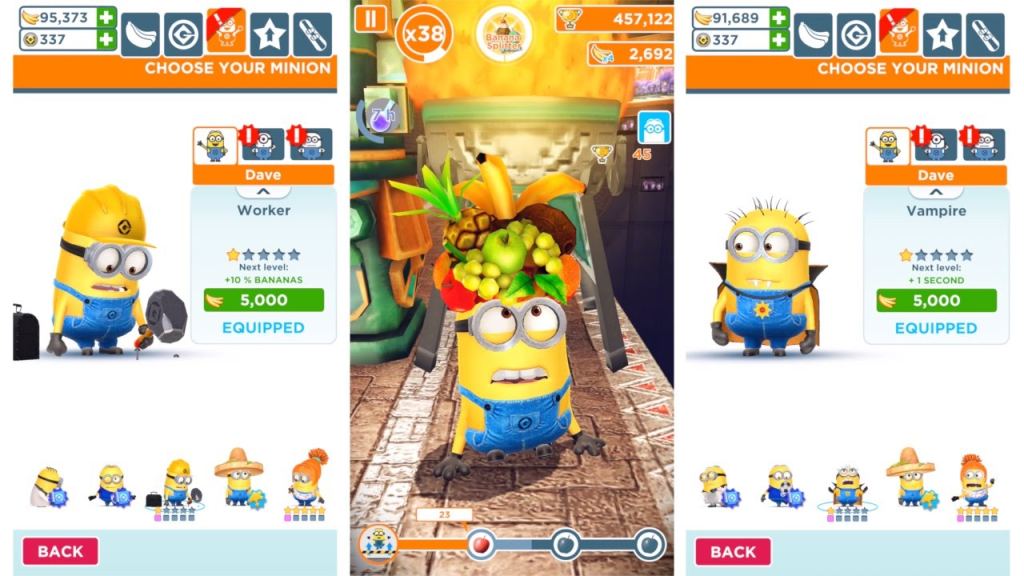
If there’s anything that product managers hate, that is uncertainty. So there’s a lot of of them that will defend pure stat escalation as a sustainable way to generate new content without major headaches to the designers (lots of mobile RPG titles do this).
But it has its own issues…
- First, it is not very fun, since it doesn’t alter the gameplay, generating no new strategies or synergies.
- Eventually, it also devaluates the appreciated future value of the content, as it makes players understand that it will become less valuable overtime, when the next escalation happens.
- And it completely removes value of previous content, for the older content will be simply skipped by players that come anew into the game, generating zero revenue.
- And ultimately, it is extremely Pay2Win, which will end up churning a lot of players which of the lower spending range. Which means that high paying users won’t have anyone to play with…
STRATEGY #2: ORTHOGONAL DIFFERENTIATION
On the other side we have orthogonal differentiation, which is so unsuited for long-run service games that it usually appears in combination with stat escalation.
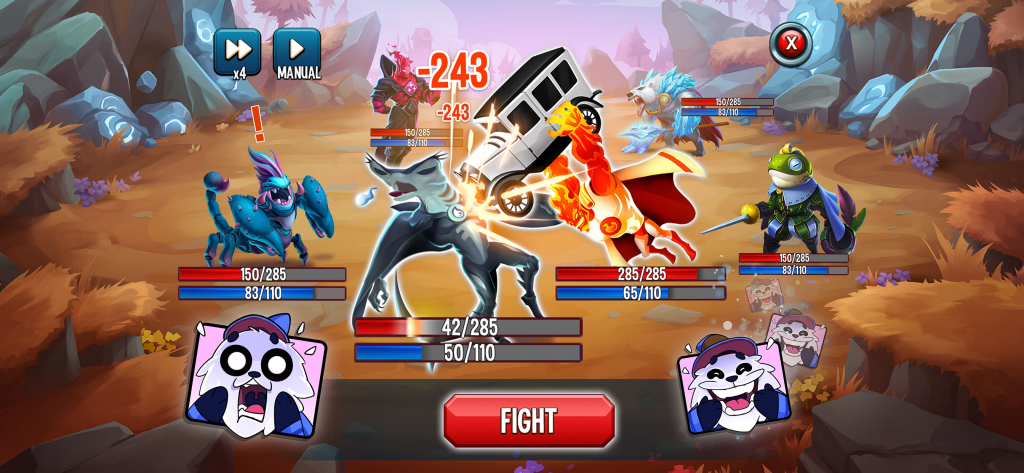
Unfortunately, pumping up an endless amount of orthogonally differentiated content has problems on its own:
- It makes content much harder to create and balance, since players will combine an ever growing list of old content with the newer ones and find game breaking combos which ultimately dimish the fun.
- It generates content cannibalization, by eventually creating cards so useful that removes future need to buy anything else.
Since adding infinite amount of different cards would make Magic: The Gathering unmanageable, how did they manage to keep it sustainable and fun?
Because MTG has a card obsolescence system: Set Rotations.
How do Set Rotations work?
Summarizing, this means that every time there’s a rotation, the oldest 4 sets that were still valid on the main competitive mode (Standard) become no longer valid to play there.
Discontinued (deprecated) content remains in the game, albeit with limited usefulness, for it can still be used in secondary – yet prestigious- formats such as Legacy or Vintage.

This structure of set release and rotation generates movements on the meta in 3 time cycles, each of which means an additional incentive to build new decks (and spend money):
- Annually (Set Rotation): This is hardcore deprecation we just explained, which forces reluctant players to move to the new content. While this sounds heavy, it’s actually the less impactful on the game meta.
- Quarterly (Set release): Whenever a new set is released, the meta evolves:
Some new strategies will appear, empowered by the new mechanics on the released set, while other may suddenly be countered by the new cards and be rendered useful…
This means that, during a year, there’s 4 organical micro-rotations.
New sets will have the advantage for 3 months, before the next one is released and the status quo changes. A strong incentive for any engaged user to get them. - Less-than-quarterly (Card banning): Another action which may revolutionize the meta between the release of the next set is removing from the game or ammending a card which is key to a specific dominant strategy.
This – obviously – is met with strong controversy from the player community.
BENEFITS OF THIS STRUCTURE
1. BRINGS BACK AND RETAINS OLD PLAYERS, HELPS NEW PLAYERS GETTING IN
Content legacy is a strong incentive to keep old players not abandoning the game, but it also means that players that churned and new players have it harder to hop in.
They will have to build huge inventories to be able to keep up with the players that already own everything, and learn a lot before they can become standard players.
That is a huge entry barrier.
On the other hand, MTG has been very successful bringing new players into the game, because set deprecation equalizes the battleground:
Both new and old players are in a similar position, and they need to collect the new cards and compete without the later having the edge thanks to an inventory advantage due to having played for a long time.
New players (and churned players) don’t have to deal with years of history. They can skip it all and focus on the last sets, quickly entering the meta and becoming part of the game community.
And once in, further set releases will keep them hooked as they master new mechanics, collect new cards and build decks about the new strategies…
2. It’s easier to create meaningful AND BALANCED content
Creating a card that is interesting when there’s several years worth of cards to compete against is difficult, and risks creating overpowered combos which make the game dull.
But with the set rotation system, in order to become interesting, new cards have to beat only the specific mechanics and balance of the latest ones, instead of the entire legacy of content of the game.
Regarding balance, set rotations means it’s a smaller set to search for exploits and unbalances; and also that if there’s something slightly unbalanced, it will eventually rotate out of the game.
On top of this, card deprecation strongly counters stat escalation effects.
3. HELPS BUILDING AN IP
It’s very hard to generate iconic characters, locations and objects in a game which regularly introduces new content, because the previously released characters get quickly buried under the newer ones.
It’s two contradictory objectives: from the business side, devs want to sell the new characters, yet from the IP side, devs want players to care about older ones.
How come the barbarians and the hogrider are key faces of Clash Royale, yet advanced players don’t use them anymore, and are instead playing with rather anonymous cards that are newer and more powerful?
Set rotations allow MTG to release the same characters several times over the years, further developing their stories, maintaining antagonists… As well as moving the world story further, or introduce new settings.
This allows them to make memorable characters with story arcs, that become loved by the audience and then can be explored later on sideproducts:

It would’ve been long forgotten by the audience if not for his recurrent plans to become a god, which make him reappear every few sets…
4.GENERATES COLLECTOR VALUE
It doesn’t matter if they’re playing an RPGs, a breeding game or acollectible card games: Collector players value collectibles based on how hard and exclusive they are to obtain. And what else is more exclusive than something that is not printed anymore?
Since the cards on discontinued sets won’t be printed again, they become extremely rare and exclusive… and that makes them great objects of desire for collectors.
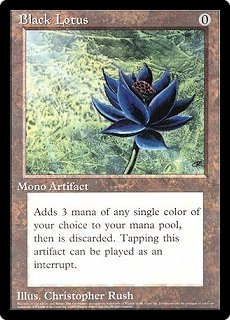
An example of this is the case of the Black Lotus, a card dating from the Alpha set in 1993 and that has been banned since forever, yet it got sold about a year ago at the stunning price of of 166.100$ (!!!!). The reason? There’s few of them…
5. DIMINISHES UNIQUE SELLING POINTS OF COMPETITORS
An additional advantage of these constantly evolving meta is the fact that if a competitor game has released a mind blowing mechanic or setting, it will eventually make its way into MTG.
But this won’t mutate the game too far away from its original or core design, since eventually that mechanic will be deprecated, together with the set it belongs to.
How to make it happen?
While in most mobile F2P games, deprecating older collection items would be met with strong controversy from the player base, MTG has pulled off an incredible an incredible achievement: that the rotation is widely accepted with a positive mood, even celebrated among their audience.
If you’re thinking on applying it to your game, these are – in my humble opinion – some of the key practices that have to be taken in account:
1. Be clear and transparent with players
The fact that at some point will not be able to use some of your content anymore is not the most exciting point you want your players to know when you’re struggling to convince them to start a long term relationship with your game.
So, as a developer, you might be tempted to avoid talking about that specific topic, until it happens.
If your game has a long legacy, or aims to last forever, you need to avoid backstabs to your fans. Games with a long legacy can’t afford the move fast and break things motto, and MTG definitively protects that legacy by not hiding what’s going to happen.
Instead, they treat their audience with maturity by announcing clearly and far in advance when and how these changes will happen, and how so that audience is ready.
2. Generate a sustainable spending pace
If your monetization model is extremely whale oriented and now you’re trying to make your players make it rain every few weeks by deprecating older content, you’ll likely make a short termed spike of revenue…
But then you’ll progressively burn the players and kill that cashflow, simply because they won’t be able to afford remaining competitive or they’ll pass on the purchases, knowing that whatever they buy will soon become replaced by the next big thing.
MTG doesn’t rush these rotations to make quick cash.
Instead, they play the long game by making themselves sustainable as a hobby by asking for money from releasing new content to their players every several months (a new set every 3 months, a rotation every year). Therefore making their players spend regularly, but never too much, too fast .
3. Most of the new content should be easily accessible
Unless they’re whales, players won’t be very excited about a new character being released if they’re not going to be able to afford it.
On the other hand, it’s difficult to make advanced players excited by releasing cards oriented to new players, which will be less powerful than the ones they already have.
Through set rotations, MTG is able to achieve both objectives at the same time, since even advanced players have to renew their starter inventory.
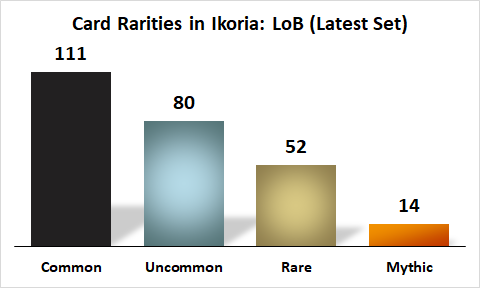
As a consequence, all sets include a lot of lower rarity cards too, which become parts of the collection that even low-spending players can obtain quickly (and in a non-expensive way) in order to experience the new mechanics of the set, while looking for the rare ones.
4. Old content should be already obsolete
Not being able to crush your foes with your old content is a hard pill to swallow, but it’s less of a deal if you were not playing with it anymore.
MTG reinforces that by making that key content in newer sets counters strongly dominant strategies, to incentivate people to move to the newer cards by themselves.
For example, a key mechanic in Theros beyond Death was summoning cards from the graveyard by sacrificing a certain amount of other cards that were there too…
So it wasn’t surprising that on the next set Ikoria, Lair of Monsters, a lot of spells removed cards from the enemy graveyard.
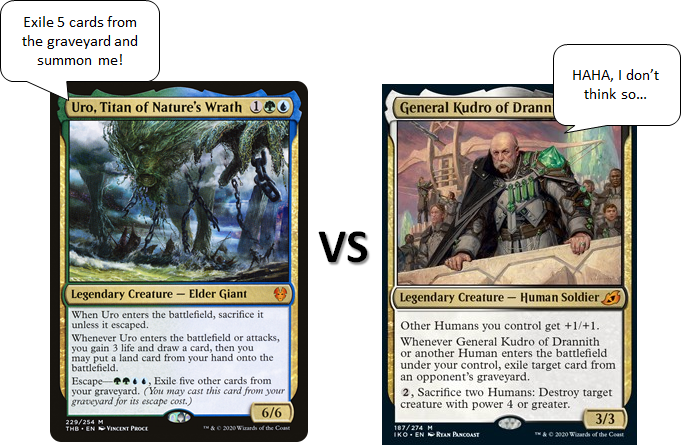
Conclusions
Hopefully, by this point you’ve a general idea about Set Rotations in MTG, and what are some of the keys on how to adapt this content management model for your own games. You are welcome.
Stay tuned for more content. On the following article, I will explain how would I apply it to a behemoth project: Supercell’s own tactical card game, Clash Royale.
Note: Set rotations have existed in different forms in MTG since 1995, but for the sake of simplicity, in this article talked exclusively about its latest incarnation, the Three-and-One Model (2018), which IMHO is the superior iteration to date.
(For anyone interested on the historic development of the set rotation system, I suggest these two articles from their wiki: [Blocks] and [Standard Format]).

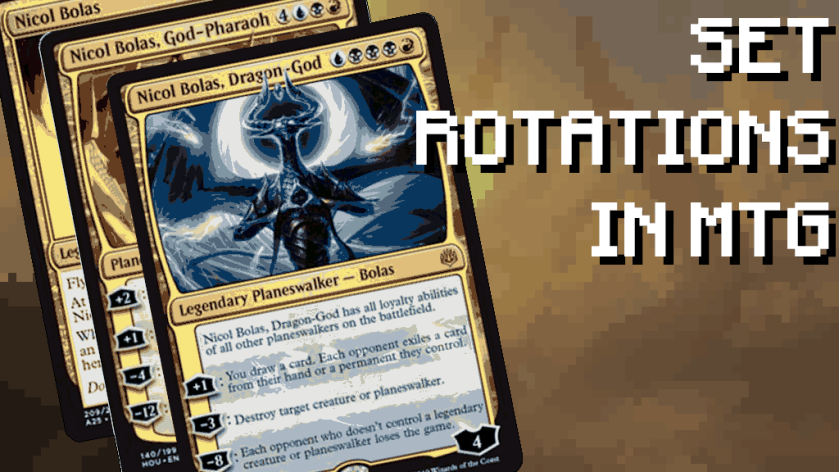
Perfect piece of work you have done, this website is really cool with excellent info .
LikeLike